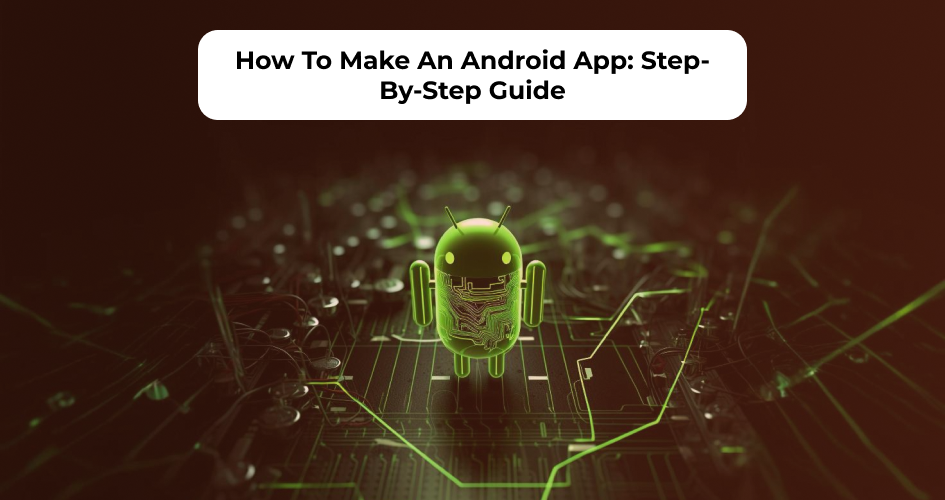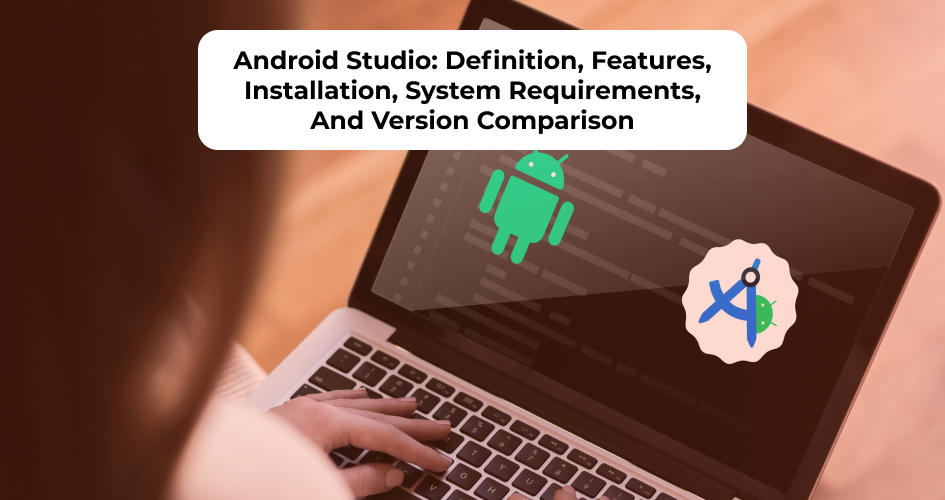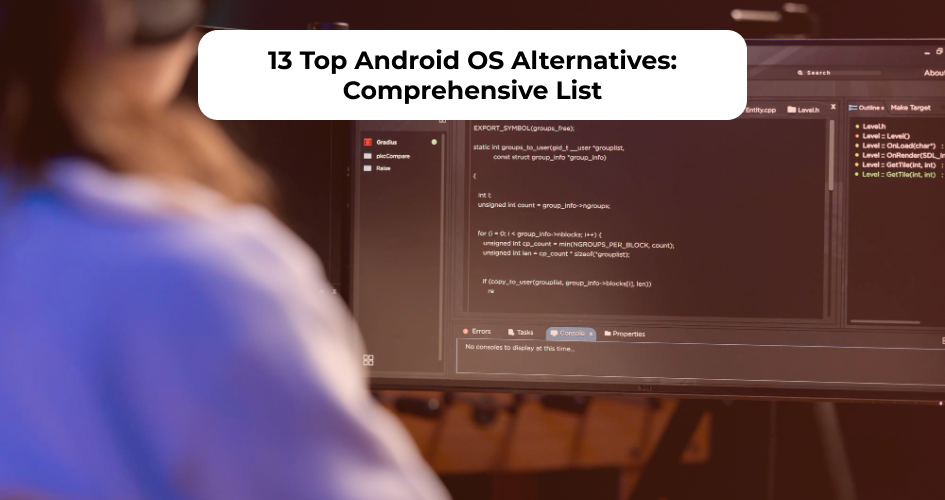Before looking for an Android app development company to work with, understanding the evolution of the Android mobile operating system (OS) is important.
It provides valuable insights into the platform’s capabilities and helps anticipate future trends.
That way, businesses can make an informed decision by ensuring the company has adapted to changes in the Android ecosystem.
Are you ready to make sure the successful execution of your mobile app project? Dive into the history of the Android operating system below!
The Early History of Android
The Android development was started by Android, Inc. in 2003.
Then, Google purchased it in 2025 and made two internal releases before it launched the beta version and the software development kit (SDK) in November 2007.
Google released both the OS and SDK with their source code as free software under the Apache License.
The company then publicly released Android 1.0 and 1.1, together with the launch of the T-Mobile G1 or HTC Dream in October 2008.
These first Android versions didn’t use unique code names, until Ryan Gibson, the project manager, came up with a confectionery-themed naming scheme in Android 1.5 called Cupcake.
Android Versions History
Here’s a brief overview of each Android version’s highlights from the platform’s initial version to the present.
2008-2009: Android versions 1.0 to 1.1
Back then, the software was basic as these Android versions included early Google apps, including Gmail, Google Maps, YouTube, and Google Calendar, which were directly integrated into the OS.
2009: Android version 1.5 (Cupcake)
This version started to get an Android version name.
Cupcake showed many adjustments to the interface, such as the on-screen keyboard since more phones moved away from the physical keyboard model.
It also brought a framework for third-party app widgets and an option for video recording.
In this release, Google used API level 3 to support widgets and search browsers.
2009: Android version 1.6 (Donut)
Donut became more responsive since it could operate on different screen sizes and resolutions.
Other prominent features introduced were support for CDMA networks, a battery usage indicator, and a text-to-speech engine.
Android Donut used API level 4 that enabled phone screenshot capture and voice commands.
2009-2010: Android versions 2.0 to 2.1 (Eclair)
Eclair’s most innovative elements were voice-guided turn-by-turn navigation and real-time traffic reports.
It also added a speech-to-text function and pinch-to-zoom capability that was once exclusive to iOS devices.
Android Eclair used API level 5, which allowed the OS to support low-density to high-density display screens and an intelligent auto-correct feature.
2010: Android version 2.2 (Froyo)
Froyo made a new standard by releasing the dock at the bottom of the home screen.
It also supported Adobe Flash for the Android browsers so that users could access rich digital content and the Android Cloud to Device Messaging service that enabled push notifications.
In Froyo, Google used API level 8 with 2.5 times better performance than the previous release.
The company even claimed this version to have the fastest browser among other smartphones in 2010.
2010-2011: Android version 2.3 (Gingerbread)
This release introduced support for near-field communication (NFC) for mobile payment solutions.
It also refined the interface with a simplified color scheme – a black background and green components for the Wi-Fi, signal, and battery bars.
With Android Gingerbread, Google used API level 9 and upgraded the Linux kernel to 2.6.35 to make sure the OS could handle power more efficiently with the new interface.
2011: Android versions 3.0 to 3.2 (Honeycomb)
Honeycomb was mostly developed for devices with larger screen sizes like tablets.
It featured an interaction model that offered better multitasking, notifications, and widgets.
These versions also added bookmarks and an incognito mode for anonymous browsing in the Browser app.
2011: Android version 4.0 (Ice Cream Sandwich)
In the same year as Honeycomb, Ice Cream Sandwich was released to introduce a cleaner, minimalist design with a new typeface Roboto.
It had the ability to access the camera from the lock screen, face recognition for unlocking devices, and monitor mobile data usage.
The release of Ice Cream Sandwich was with API level 14 that made the OS compatible with both low and high-resolution devices.
2012-2013: Android versions 4.1 to 4.3 (Jelly Bean)
Jellybean came with API level 16 which improved the predecessors by delivering a smoother user experience.
It had a refresh rate of 60 frames per second to make and widget animations.
The first of the three releases, 4.1, gave the OS a more responsive feel with expandable notifications.
Two more releases included further optimizations, including a hidden privacy feature and access to display widget pages by swiping the lock screen left.
2013-2014: Android version 4.4 (KitKat)
This version marked the end of Android’s dark era by using lighter backgrounds and more neutral highlights, giving the OS a more modern appearance.
KitKat also introduced the first version of “OK, Google” support.
This release operated with API level 19 that helped improve the performance, speed, and user interface.
This made the OS deliver improved multiple sensors’ feedback and updated the schema for the user interface.
2014-2015: Android versions 5.0 and 5.1 (Lollipop)
The highlighted update on this version is the redesigned user interface developed around a design language named Material Design, retaining a paper-like feel to the interface.
Another improvement was that users could access notifications from the lock screen and any application as top-of-the-screen banners.
Android Lollipop used API level 21 that enhanced users’ experience with 3D views, making a smooth execution of visual element transitions.
2015-2016: Android version 6.0 (Marshmallow)
Marshmallow focused on improving the overall user experience of the previous version with API level 23.
It had a new power management system that could reduce background activity and provided native support for fingerprint recognition and USB-C connectors.
2016: Android versions 7.0 and 7.1 (Nougat)
Compared to its predecessor, Nougat showed notable changes to the OS.
These included a split-screen view displaying multiple apps on-screen at once, inline replies to notifications, and a new “Data Saver” mode that restricted background mobile data usage.
Nougat operated with API level 25 to make the prominent feature, multitasking applications in the split screen, possible.
2017: Android versions 8.0 and 8.1 (Oreo)
Similar to Nougat, Oreo contained major features, such as notification grouping and picture-to-picture support for video, as a result of API levels 26 and 27.
Users could also snooze notifications, add custom sounds to ringtones, alarms, or notifications, and display battery percentages for connected Bluetooth devices.
2018: Android version 9 (Pie)
Android Pie used Google’s Material Design 2.0 that provided more variance in aesthetics, including a custom theme and rounded corners.
With API 28, this version also supported screen cutouts or “notches” depending on the screen size and redesigned the on-screen navigation bar into a slim home button.
2019: Android 10 (Quince Tart)
With API level 29, Android 10 had many updated system behavior changes that could affect many apps.
This Android version introduced a system-level dark mode which allows third-party apps to automatically change into a dark mode.
It’s also optimized for foldable smartphones, such as changes to multi-window mode and app continuity when changing modes.
Therefore, Google expected compatibility mode to be put in when the screen size changes or the app moves from one screen to another.
2020: Android 11 (Red Velvet Cake)
In Android 11, users could enjoy pop-up overlays for chat and messaging notifications, known as bubbles, for greater prominence.
If an app targeted Android 11 or API level 30, the notifications wouldn’t be presented as bubbles unless they fulfilled the new conversation requirements.
Android Red Velvet Cake also enabled apps to use one-time permissions for camera, microphone, and location, providing better privacy and security.
2021: Android 12 and 12L (Snow Cone)
The most significant progression in these versions was the interface.
It had an updated design standard called Material You, implying that you as the user could customize the device appearance with dynamically generated themes adaptable to the wallpaper colors.
Thanks to API level 31, this version enhanced the security by adding clipboard access notifications that could alert users to potentially sensitive actions and give them the option to review or dismiss the access.
2022: Android 13 (Tiramisu)
With API level 33, Android 13 took privacy and security to the next level.
Every app needed to request permission from users before they could send notifications.
It also added a new media picker that allowed users to choose which photos and videos an app had access to.
Furthermore, the app let users set languages individually for apps, which then was improved in the next version.
2023: Android 14 (Upside Down Cake)
Android 14 served a more inclusive community by adding Grammatical Inflection API, so they could set the apps according to their preferred grammatical gender.
It also improved the battery life and featured an extreme battery-saver mode in addition to the “regular” battery-saver mode.
2024: Android 15 (Vanilla Ice Cream)
Still released the first developer preview in February 2024, Google expects to share the final update in Q3 2024 and add dynamic performance, health connect, and in-app camera controls.
The Future of Android OS
Over the years, we have seen numerous updates from the Android operating system.
Each has brought fresh capabilities and features that adapt to new technologies and human needs.
Therefore, we can expect that the future of Android app development will be bright and hopeful.
Here are several key trends to follow.
Machine Learning and Artificial Intelligence
With emerging technologies like machine learning (ML) and artificial intelligence (AI), the Android system holds promise for continued innovation.
We’ve witnessed the popularity of smart assistants like Google Assistant, so more and better AI-powered features are expected, such as AI-driven camera enhancements and smarter predictive text.
Integration with the Internet of Things (IoT)
Android is more likely to further integrate with IoT devices, allowing more seamless connectivity and control over smart home appliances, wearable devices, and security systems.
In this case, we can expect more personalized health or home insights and convenient on-the-go control.
Android app developers can also apply this technology to create a more responsive experience.
For example, as IoT helps with real-time analysis, ride-sharing apps can provide estimates of arrival times and routing more accurately.
Meanwhile, health and fitness apps can use it to monitor users’ exercise sessions and provide instant feedback.
Enhanced Security and Privacy
Many people are more aware of their privacy and security.
In fact, over 60 percent of smartphone users worry about the data security on their phones.
Therefore, if you work with an Android development partner, ensure that it complies with the security standards and builds a safe app for users, including:
- Implementing strict app permissions
- Improving encryption protocols
- Offering users with more control over their data
Material Design and Foldable Devices
In terms of design, Android may further refine its Material Design language to offer more intuitive and cohesive user interfaces across devices.
This could involve advancements in:
- Gesture-based navigation
- Smoother animations
- More responsive layouts
The improvements are even more necessary with the rise of foldable and dual-screen devices.
Developers need to make innovations that use the unique capabilities of these devices.
Conclusion
From humble beginnings to its current status as the world’s most popular operating system, Android’s evolution has been full of innovations and adaptations to new technologies.
Through each version, it has introduced new features, improved the design language, and expanded its capabilities.
Looking ahead, Android holds promises for further innovations, especially with the rapid growth of technologies like AI, IoT, and foldable devices.
With our expertise and dedication, we stand to assist your company in speeding up your Android app development and building successful Android apps.
Intelivita has more than 12 years of experience and over 200 built apps for Android devices that will ensure your app uses the latest advancements in Android technology to provide users with seamless experiences.
Explore the success stories of our Android app development solutions for your reference, and let us be your partner in your next project!




